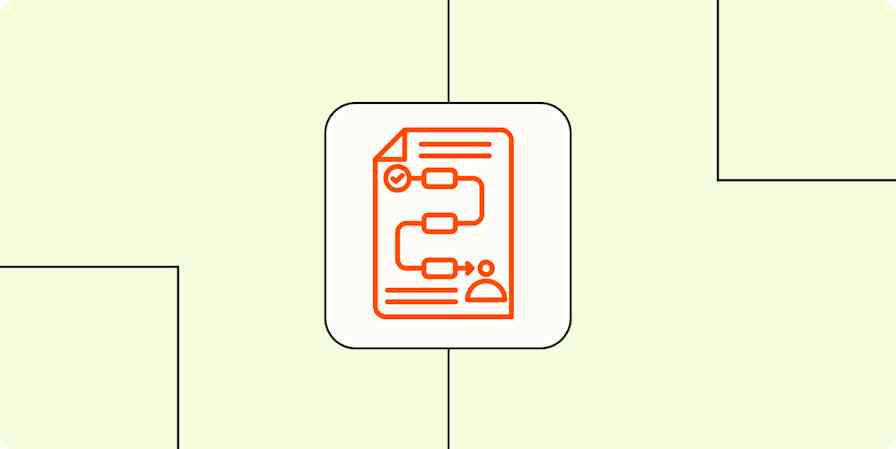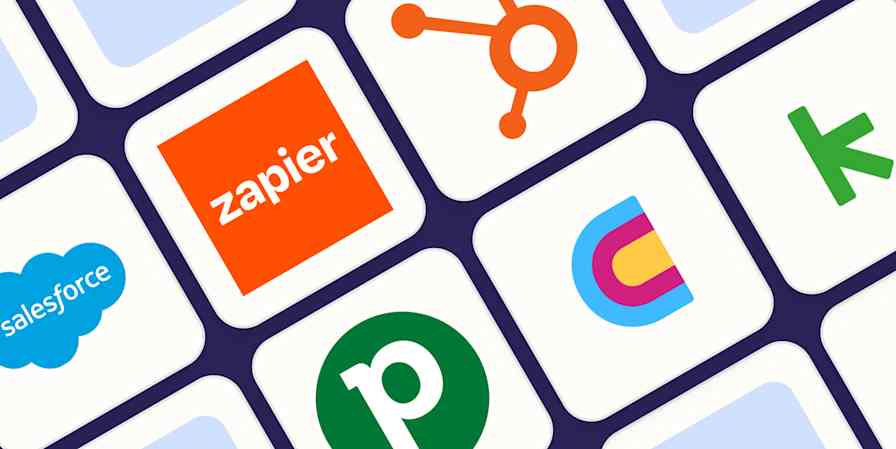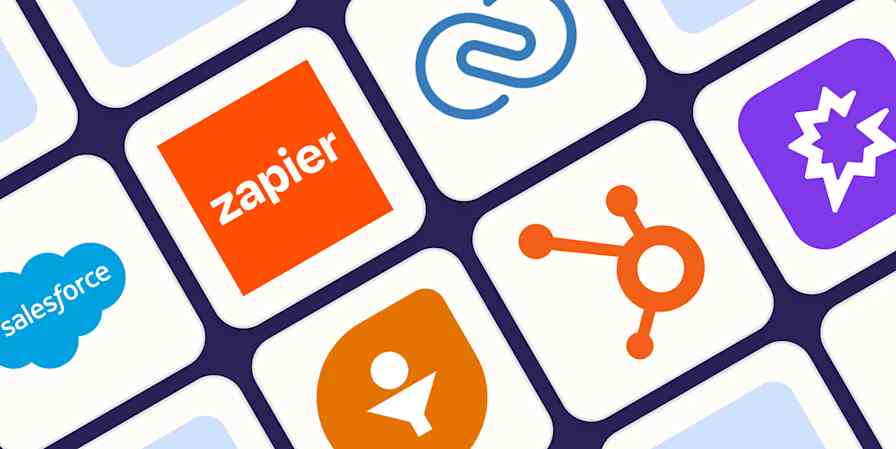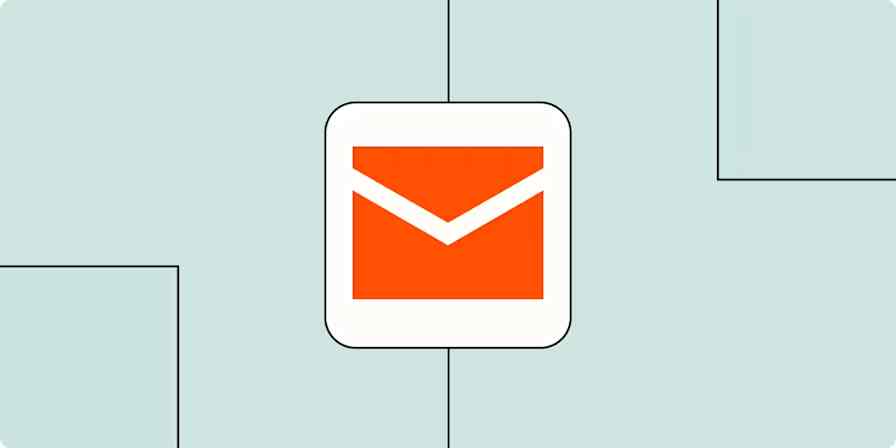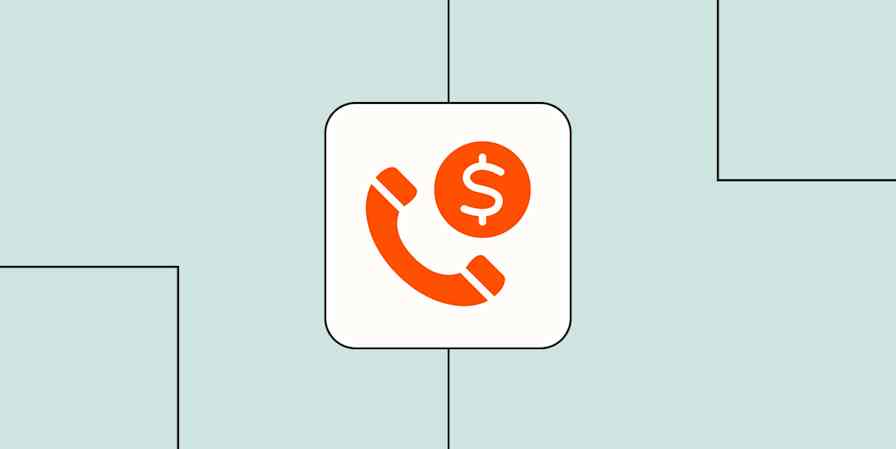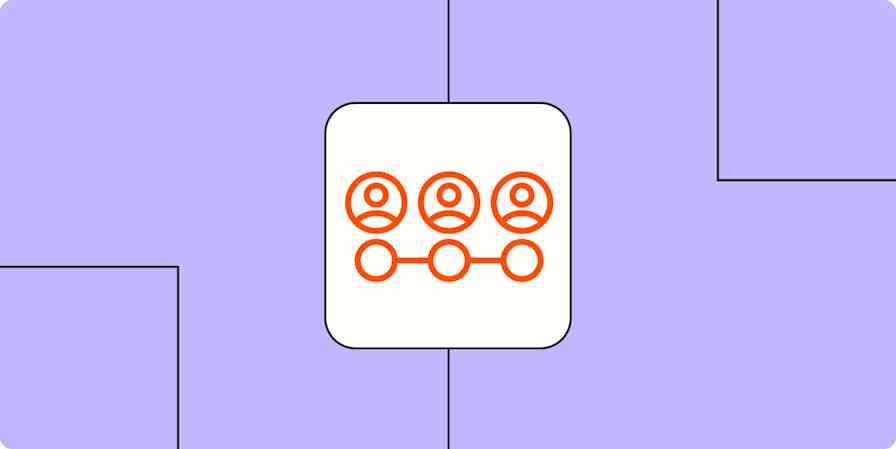Any time I publish a landing page, I'm immediately thinking about what I could do next to make it better. How can I optimize the page to pull in more visitors? What new things can I add to see if we can improve conversions?
Managing a successful landing page involves constantly testing new ideas, keeping an eye on the data, and adapting to whatever seems to resonate with your target audience. It's the beauty (or the drag, depending on how you look at it!) of online marketing.
To inspire your next campaign, I've collected 20 of the best landing page examples from a range of industries: SaaS, health and wellness, eCommerce, marketing, and more. Ahead, I'll tell you what they do right and give you tips on how to boost conversions with your own landing pages.
Table of contents:
What is a landing page?
A landing page is a standalone web page designed to guide visitors toward taking a specific action—for example, signing up for a demo, downloading a resource, or making a purchase.
Landing page vs. home page
While they may look similar at first glance, a landing page and a home page serve very different purposes. A home page acts as the front door to your brand, introducing your company, highlighting multiple offerings, and linking out to different sections of your website. A landing page, on the other hand, has a single focus—whether that's capturing leads, driving sign-ups, or prompting a purchase.
Key elements of an effective landing page
Here's an overview of the key elements of an effective landing page. You'll notice that many of the examples featured below incorporate more than one of these elements into their landing pages.
Benefit-led messaging: Highlight what's in it for your visitor in a concise, memorable way.
Lead magnet: Add a free offer or incentive—for example, an eBook or discount code—to lower the barrier to entry and give visitors immediate value.
Clean, mobile-friendly design: Create a seamless, intuitive experience across devices, reducing friction and keeping users focused on the goal.
Personalization: Make the content feel relevant and tailored to your visitor, boosting the likelihood of conversion.
Video or dynamic visuals: Bring energy and clarity by showing your product or service in action, creating a stronger emotional connection than text alone.
Social proof: Display reviews, testimonials, or user-generated content to establish credibility and overcome objections.
Clear call-to-action (CTA): Guide users toward the next step. Use time-limited deals or countdowns to encourage immediate action.
Fast load speed: Deliver a positive customer experience and reduce drop-offs by delivering content instantly.
20 landing page examples for your next campaign
The pages below have more than a well-placed CTA. Take a look, and see which elements from these landing page examples might translate well for your own purposes. Note: some of these examples come from home pages, but the tactics will work just as well for your landing pages.
1. Revolution Studio
Why it works: Wows with video

As a writer, this is something that's tough to admit: sometimes, copy just isn't enough. I've grown to accept that using video on landing pages can really fill gaps, helping you communicate messages and ideas where copy, images, or illustrations fall short.
Check out the above example from Revolution Studio, which is the spin studio I actually go to. I signed up for a membership without even visiting the place because the video did so much to convince me that it was exactly the kind of workout I was looking for. No powerful adjectives would've had the same effect.
There are a few different ways you could go about adding video to your landing pages:
You could embed a product or how-to video to show your product in action and bring a few use cases to life.
You could use a testimonial video to add some social proof.
You could even turn the entire background of your landing page into a video. With health and fitness businesses, for example, communicating the right energy and atmosphere is key to pushing visitors over that line, and in-your-face video is the perfect way to do it.
2. HubSpot website grader
Why it works: Offers something for free

Sometimes, a free trial of a product or service isn't enough to push prospects to hit that CTA. If you expect a fair bit of commitment from your customers (a substantial monthly fee or annual contract, for example), you might need to go a step further. Give them something for free—and do it on your landing page.
A great example is HubSpot's website grader. Enter your website URL (and your email address, of course), and it will give you an overall score and highlight any potential areas of your website that aren't performing well. "Oh, and did we mention we offer websites as part of your HubSpot package?" It's the perfect foot-in-the-door technique.
If you're a B2C business selling a tangible product, some sort of free sample will go down a treat. If you're selling a B2B SaaS product, think about offering something that you know will be of value to your target market, like an eBook or an insights report—any sort of lead magnet is a great start to the inbound journey.
You can use Zapier's pre-built free offer template to collect customer information through a highly customizable form embedded on your landing page. After someone submits the form, they'll immediately receive an automated email with your free offer. All this is happening while your leads' data is neatly organized in a connected table.
Discover the power of Zapier’s Free Offer Template to collect valuable leads through a custom form, and engage them with automated, personalized emails.
3. HelloFresh
Why it works: Links to your app (with a QR code)

A friend recently talked me into joining the meal-kit company HelloFresh. (She got a free meal box out of it, of course!) Scanning through the landing page, I was pretty convinced, but what made me want to act immediately was the QR code that took me straight to the app. There, I could choose my menu and see the different options available for my area, so it felt personalized (and even more convincing).
Capturing leads is one thing, but what if you need visitors to download an iOS or Android app to fully sign up? The more you can connect these two outcomes, the better. Including Apple and Google Play store buttons on your landing page works, but adding a QR code that takes visitors straight to the app download is way more streamlined (and a bit more fun).
Sure, QR code technology is nothing new, but there's still something kind of novel about it, right? Linking the landing page up to the app also meant I was able to easily sign up using Apple Pay in a couple of phone clicks instead of manually entering my card details—which makes me much more likely to convert.
4. BorrowMyDoggy
Why it works: Showcases social proof

We all know social proof works. Studies have shown it, and the fact that you've probably never bought anything without reading a review first shows it. So it's no surprise that adding social proof to landing pages can do a good job at increasing conversions.
The example above from dog-walking marketplace BorrowMyDoggy shows how convincing this technique can be. Here, you have pictures of real customers along with reviews that address the most common buyer questions and objections. This kind of social proof does all the selling for you.
Social proof can come in all sorts of ways: reviews, testimonials, quotes, photos—the list goes on. If other people like what you're trying to sell, a landing page is the right place to show that off.
5. Zapier
Why it works: Integrates a social media feed

Social feeds work so well that lots of brands actually put them on their home page. Here's how Zapier does it.
If your customers are so engaged with your brand that they actually take the time to post about you on social media, you know you're doing something right—and integrating a social media feed on your landing pages is social proof gold. It's raw, unfiltered community showcasing that screams, "you're going to love this brand as much as we do."
6. Airbnb
Why it works: Personalizes with geolocation

Here's a great example of a personalized landing page from Airbnb. They use geolocation data to automatically generate potential earnings for you based on the last 12 months of booking data for similar listings in your area. You can use the sliding scale to see how much you'd earn from one night up to 30 nights if you were to rent your property through the service.
I'd never even considered renting my apartment through Airbnb; I was only on the site to book accommodation for a trip to Prague. Now, all of a sudden, I'm seriously considering becoming a host and moving in with my parents to make some cash. See if your landing page builder offers geolocation options, and you might be able to create something that has the same impact.
7. Suno
Why it works: Provides a "here's one I made earlier"

Suno is an AI tool that auto-generates songs for you based on a simple description like "make a heartfelt song about my postman, Henry." They built a neat introductory landing page where you can scroll through sample descriptions and click to hear the songs the tool has generated.
After listening to the demos, the simple "Make a song" button is so tempting. How could I resist signing up so I can make a song about my favorite cat, Zsa Zsa, who snores like a human and does tricks like a dog? (Yes, he's real!)
If, like me, you grew up watching Blue Peter in the '90s, the line "here's one I made earlier" will strike a chord. Even if you didn't, I'm sure you get the idea. This tactic won't work for every landing page, as it relies on your product or service being something you can easily access online. But if you're able to provide a tangible demonstration of what you're offering in action, this is going to be really convincing on a landing page.
8. Notion
Why it works: Includes a secondary CTA

We all know the rules when it comes to adding CTAs to landing pages: use one, keep the copy short, and make sure it encourages quick action. But sometimes, a prospect will hit your landing page, and they're not quite ready to "sign up" or "join now." Why should you lose that prospect completely just because they're not sales-ready?
I've noticed a lot of big brands breaking the CTA rules in a way that totally makes sense. They're adding secondary CTAs to landing pages to capture those colder leads, so they can warm them up later.
Take the above example from Notion. While both CTA options involve seeing the software in action, Notion has likely learned that not everyone is ready to instantly start using the software—even if they can use it for free. Getting the most out of a platform like Notion can involve a bit of an initial learning curve, so some prospects will prefer to have a demo before feeling their way around themselves.
The colors of the buttons ensure that the secondary CTA doesn't overshadow the primary one (they would rather people try the tool themselves because demos cost resources), but adding that extra option to the page will undoubtedly improve conversions.
This is why it's so important to consistently A/B test your landing pages with different CTA options to see what resonates with your audience. You might find that breaking the rules is exactly what your website visitors want.
9. WordPress
Why it works: Showcases visual examples

What better way to advertise WordPress than to show off what others have made using WordPress? While you can't see them in a static screenshot, this landing page has three revolving carousels of design themes, curated to demonstrate the breadth and depth of WordPress's CMS.
As an amateur web designer, nothing draws me to a site builder quite like beautiful themes. I want to know what my website could look like before I put in the hours to create it. WordPress's landing page gives me as many visual examples as I could ask for, which is important for something as variable as web design.
Even better, each of these themes will freeze and display a CTA when you hover over one with your mouse. And in this case, the more opportunities to convert, the better.
10. Cocokind
Why it works: Engages with a quiz

Online quizzes are an internet treasure. You can take them to find out just about anything: which animal kingdom you belong to, which fruit or vegetable you most closely resemble, and what your favorite ice cream flavor should be based on your zodiac sign.
Beauty, wellness, and other brands use online quizzes to give personalized product recommendations to customers. They make for a more engaging shopping experience than the basic "search, browse, add to cart" routine (while still creating opportunities to convert). Check out the above landing page from Cocokind for a solid example.
As far as CTAs go, I find quizzes to be especially enticing—I know a product page is coming eventually, but I can have a bit of fun before I get there.
11. NordVPN
Why it works: Features a flash sale

This landing page from NordVPN drives conversions with a flash sale. The key details here are the percentage you'll save, the bonus three-month offer, and the time remaining to get the deal.
74% off sounds tempting on its own, but sweetening the deal with extra subscription months is what turns this from a good bargain into a great one. At the same time, the countdown clock instills a sense of urgency. (Without a timer, it's not a flash sale.) If your brand has a big sale coming up, try including similar deal-sweetening elements in your landing page.
12. Audible
Why it works: Focuses on popular content

The content-first approach to landing pages is a favorite of streaming platforms, and Audible is no exception. When you're asking someone to sign up for a monthly subscription, it's important to show that your platform has enough content—and enough good content—to keep them interested for longer than a few days.
Here, Audible frames their CTA with popular content—celebrity audiobooks, in this case. This lets me know what some of their hottest offerings are (and if I scroll down, it shows me even more). If even one book catches my eye, I'm much more likely to click that free trial button.
13. LinkedIn
Why it works: Highlights AI features

AI has been a hot topic for quite some time now, and more businesses than ever have added AI tools to their websites and software. LinkedIn is no exception, and they've made this abundantly clear on their landing page for LinkedIn Premium.
They're so convinced of the power of AI that they don't even talk about Premium itself until you scroll down the page. Up front, it's all about how AI powers the Premium experience, and to the right, there's a graphic that shows an AI profile enhancement tool in action.
Artificial intelligence has enough buzz that LinkedIn knows they can lead with it. If your business has AI features to offer, you might boost conversions by putting them front and center.
14. Olly
Why it works: Leads with new products

You don't need to be Don Draper to recognize the power of "what's new" in product marketing. Simply by being different from what's old, newness attracts. Olly puts this principle into practice on their landing page, which hits you with their latest supplements as soon as you click onto the site.
Even if I want to shop for something else, the new gummies are there—like jewelry behind glass—to stir up interest. I don't know about you, but I'm always willing to investigate a product debut. How else am I going to learn what's new about it?
15. Ahrefs
Why it works: Prioritizes readability

It's hard to grasp just how important readability is until you see a website that gets it oh so wrong. As soon as I have to zoom in or go hunting for my glasses, you've lost me. And when it comes to landing pages, losing people means losing potential conversions.
Unclear fonts, jarring colors, and an overcrowded UI will scare off site visitors—which is why good landing pages have readable fonts, complementary colors, and clean designs.
Take a look at this example from Ahrefs. The main copy is very easy to read: the orange CTA button stands out boldly against the blue background, and playful icons break up the text. There's beauty in simplicity, and it doesn't get much simpler (or more readable) than this.
16. Chobani
Why it works: Cycles between CTAs

In this example, Chobani takes a "more is more" approach to the art of the landing page. Why offer one CTA when you could offer five? While this won't work for every business, Chobani sells a wide enough range of products that cycling between several distinct CTAs on the same page makes sense.
Each entry in the slideshow links to a different product line (and, in one instance, a news post). This is a good way to show off your brand's variety or appeal to different audiences with just one landing page.
Not every user will stick around to see all five cards, but people like me definitely will. (I always have to know what comes next in a slideshow.)
17. GetYourGuide
Why it works: Focuses on an experience

As a travel platform, GetYourGuide is in the business of making memories. Because there are too many travel destinations to list on one landing page, GetYourGuide makes the smart choice of narrowing in on a highly specific experience: attending a pasta-making class in Rome.
This tells me exactly what kind of memory I could make if I use GetYourGuide to book activities for a trip to Rome. As someone who plans a full itinerary for even the simplest day trips, the specificity is a huge plus.
What's also great about this example are the separate tabs for Culture, Nature, Food, and Sports, each with its own relevant experience and CTA. That's four opportunities to convert different types of travelers—history lovers, hikers, foodies, and daredevils—all in one convenient place.
18. Figma
Why it works: Attracts with smart copy

Don't underestimate the impact of a good slogan. Just take a look at Figma's FigJam landing page. It's super readable, the color palette is easy on the eyes, and there's one CTA offering a free trial. Great, right?
But the slogan—"Turn possibilities into plans"—is what really takes this landing page to the next level. Figma seems to agree, since they've made it the most prominent element in the design. (Just look at that font size!) While the blurb beneath the slogan has more information, it doesn't grab you like the catchy tagline does.
Slogans have always played a key role in advertising, but they're sometimes overlooked in landing pages. My advice: if you've got a good one, let it shine. If you're still in the drafting phase, check out these tips for writing strong copy.
19. ChatGPT
Why it works: Highlights functionality

While several examples on this list are quite design-heavy, OpenAI strips everything back for their ChatGPT landing page. You won't find any fun icons or vibrant colors here—just white text on a black background and a single CTA button.
So why does it work? Well, in a handful of snappy sentences, OpenAI comes right out and tells me what I can do with their chatbot. There are big-picture use cases like "finding inspiration" and "increasing productivity," but also specific actions: writing, learning, and brainstorming. I'm never in doubt about what ChatGPT does, and that's important.
ChatGPT, like all AI chatbots, relies on human interaction—the more you put in, the more it puts out. Giving prospective users a shortlist of key functions is a smart way to kick-start that interaction (and convert in the process).
20. One More Day on the Appalachian Trail
Why it works: Automates with Zapier Interfaces

Some of the landing page examples mentioned in this article probably took a lot of time to create, and some you probably couldn't produce without the help of a developer. If you don't have the time, knowledge, or budget for that kind of work but you still need a landing page that converts, do what One More Day on the Appalachian Trail did: use Zapier Interfaces.
With Interfaces, you can build powerful landing pages using an easy no-code drag-and-drop system, or use this landing page template to make it even easier.
Any Interfaces landing page can also be hooked up to thousands of different apps, so you can build sophisticated workflows to automate your entire lead generation funnel.
Automate your landing pages with Zapier
Your landing page shouldn't just capture information—it should trigger intelligent, multi-step workflows that automatically move leads through your funnel.
With Zapier, every form fill or button click can become the start of an orchestrated sequence where AI enriches, routes, and personalizes the experience in real time. For example, when someone completes your landing page form, you can use AI to automatically classify and enrich their response, route it to the right team in Slack or Teams based on context, and generate personalized follow-up messages—all while updating your CRM, project tools, and calendar in the background.
Learn more about how to automate your landing pages.
Related reading:
This article was originally published in August 2022 and has also had contributions from Dylan Reber. The most recent update, with contributions from Jessica Lau, was in September 2025.

